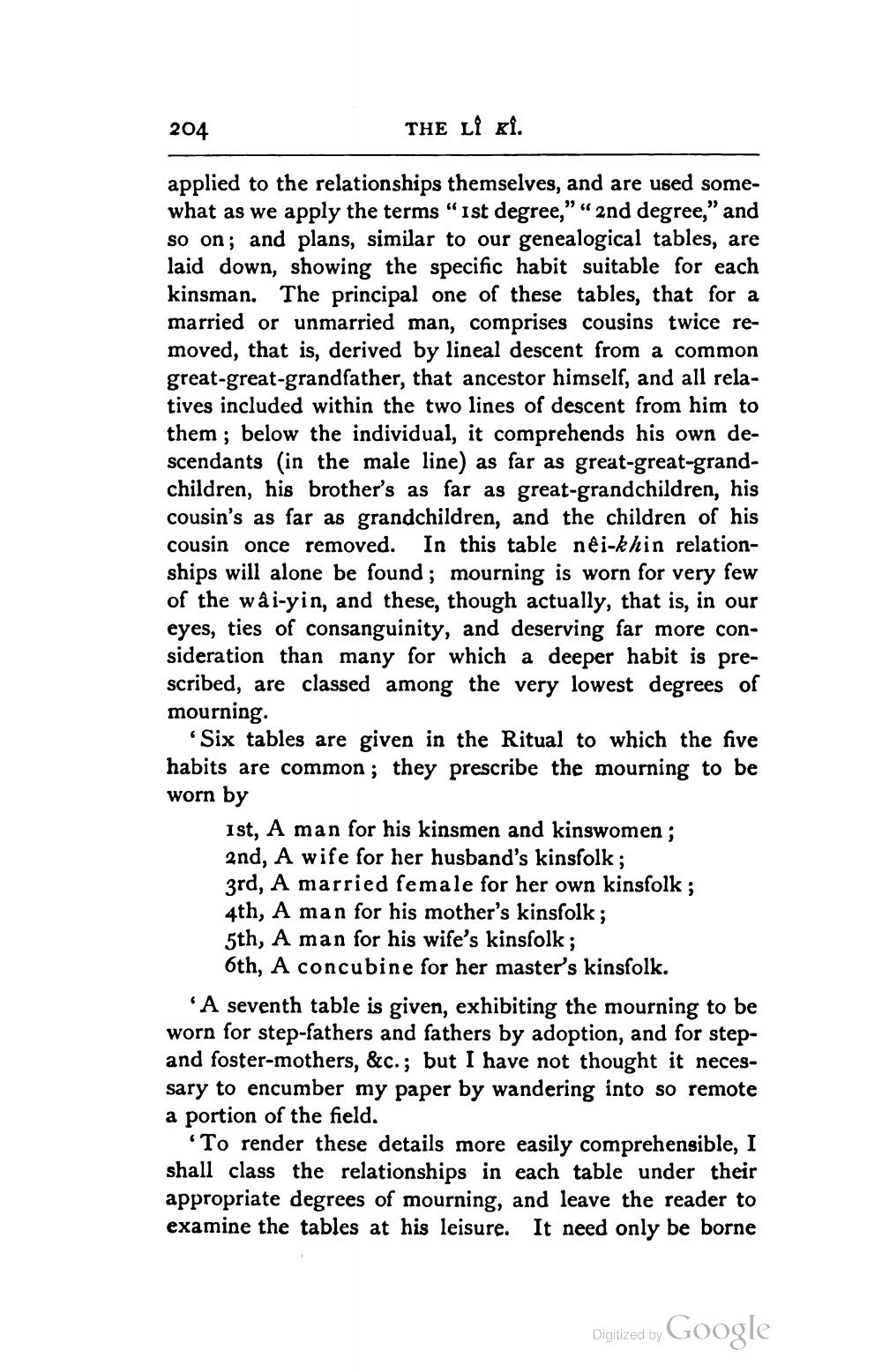________________
204
THE Li ki.
applied to the relationships themselves, and are used somewhat as we apply the terms “ist degree," « 2nd degree," and so on; and plans, similar to our genealogical tables, are laid down, showing the specific habit suitable for each kinsman. The principal one of these tables, that for a married or unmarried man, comprises cousins twice removed, that is, derived by lineal descent from a common great-great-grandfather, that ancestor himself, and all relatives included within the two lines of descent from him to them; below the individual, it comprehends his own descendants (in the male line) as far as great-great-grandchildren, his brother's as far as great-grandchildren, his cousin's as far as grandchildren, and the children of his cousin once removed. In this table néi-khin relationships will alone be found; mourning is worn for very few of the wai-yin, and these, though actually, that is, in our eyes, ties of consanguinity, and deserving far more consideration than many for which a deeper habit is prescribed, are classed among the very lowest degrees of mourning.
"Six tables are given in the Ritual to which the five habits are common; they prescribe the mourning to be worn by
ist, A man for his kinsmen and kinswomen; 2nd, A wife for her husband's kinsfolk; 3rd, A married female for her own kinsfolk; 4th, A man for his mother's kinsfolk; 5th, A man for his wife's kinsfolk;
6th, A concubine for her master's kinsfolk. "A seventh table is given, exhibiting the mourning to be worn for step-fathers and fathers by adoption, and for stepand foster-mothers, &c.; but I have not thought it necessary to encumber my paper by wandering into so remote a portion of the field.
"To render these details more easily comprehensible, I shall class the relationships in each table under their appropriate degrees of mourning, and leave the reader to examine the tables at his leisure. It need only be borne
Digitized by Google




